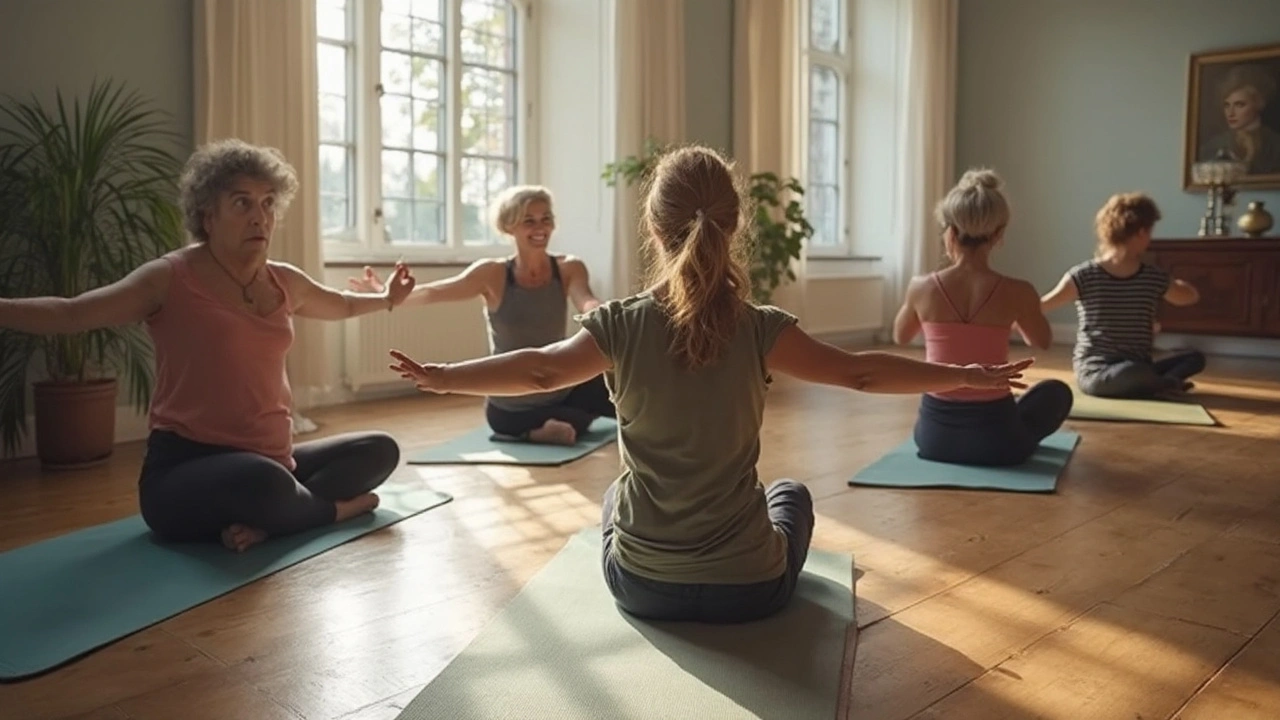Yoga for Mobility & Recovery
Want less pain and better movement without spending hours on the mat? Yoga done right can loosen tight joints, improve posture, and make your massage work last longer. This page gives short, practical moves, breathing cues, and simple ways to combine yoga with massage and body therapies for faster results.
Quick 10‑Minute Routine
Try this compact routine when you’re short on time. Do each move for about 60 seconds, flow slowly, and focus on steady breathing.
1) Cat–Cow (spinal mobility): On hands and knees inhale as you drop the belly and lift the gaze, exhale round the spine and tuck the chin. Move with the breath, 6–8 rounds.
2) Downward Dog to Forward Fold (hamstrings + shoulders): From hands and feet, pedal your legs, then walk to forward fold. Hold each for 30–60 seconds, breathe long slow breaths.
3) Low Lunge (hip opener): Step one foot between your hands, sink the hips forward while keeping the back knee soft. Breathe into the front hip for 5–8 breaths per side.
4) Bridge Pose (glutes + chest): Lying on your back, press feet down and lift hips. Clasp hands under you if comfortable. Hold 6–8 breaths, lower slowly.
5) Supine Twist (spinal release): Lying on your back, draw one knee across the body, gaze opposite. Hold 6 breaths each side to calm the nervous system.
Breath, Frequency, and Safety
Use a simple 4–6 second inhale and 4–6 second exhale during holds. Three short sessions a week beats one long session once in a while. If you have scoliosis, recent surgery, or severe pain, check with a clinician before starting. When a pose hurts in a sharp or shooting way, stop and modify.
Want faster progress? Pair yoga with targeted bodywork. Gentle therapies like Feldenkrais and Ortho‑Bionomy tune movement patterns, making yoga cleaner and less effortful. Structural work—Hellerwork or Rolfing—can change how your body holds itself so poses feel easier. For sore muscles after practice, Amma massage and warm stone therapy help speed recovery.
Before deep tissue or aggressive bodywork, warm up with 5–10 minutes of yoga. After a session, use restorative poses—legs up the wall or a supported child’s pose—to integrate changes and calm the nervous system. If you have chronic back issues, ask your therapist which poses to avoid or adapt.
Small daily habits beat occasional extremes. Try two minutes of mindful movement at your desk: neck rolls, shoulder circles, and a standing hamstring stretch. Over weeks you’ll notice less stiffness, better posture, and less need for pain relief.
Ready to try something new? Start with the 10‑minute routine, pair it with a gentle massage when you can, and track how your mobility changes in two weeks. Simple steps add up fast.

How Feldenkrais Training Transforms Your Yoga Practice for Greater Flexibility & Awareness
Discover how Feldenkrais training can level up your yoga. Master mindful movement, boost flexibility, and prevent injuries in your daily practice.
Categories
- Health and Wellness (148)
- Alternative Therapies (86)
- Massage Therapy (40)
- Travel and Culture (15)
- Beauty and Skincare (9)
- Holistic Health (8)
- Health and Fitness (5)
- Spirituality (5)
- Other (2)
- Personal Development (2)



